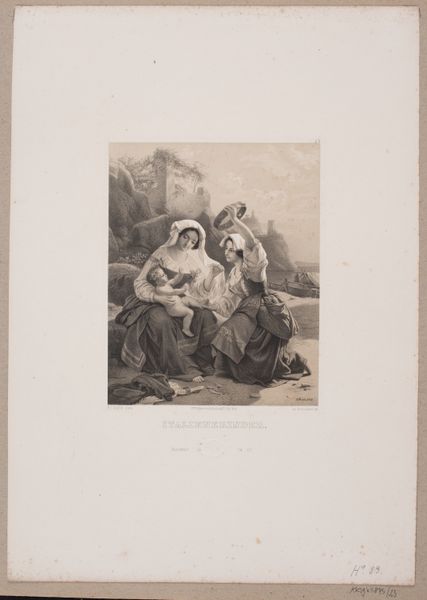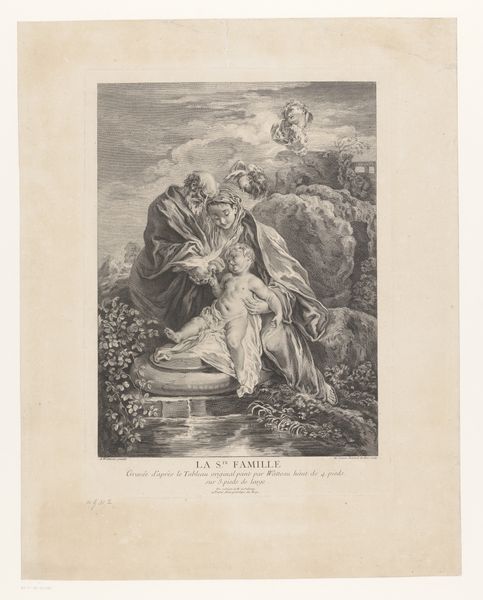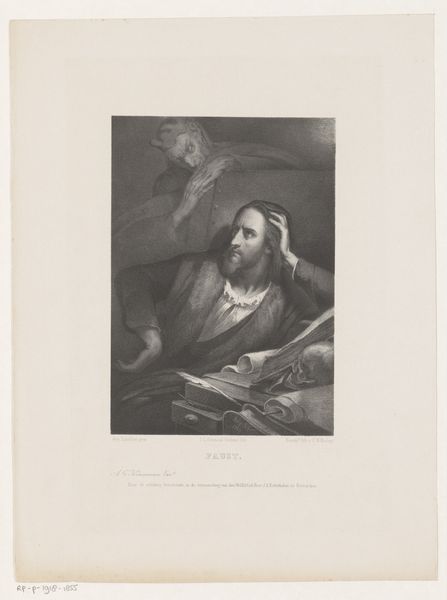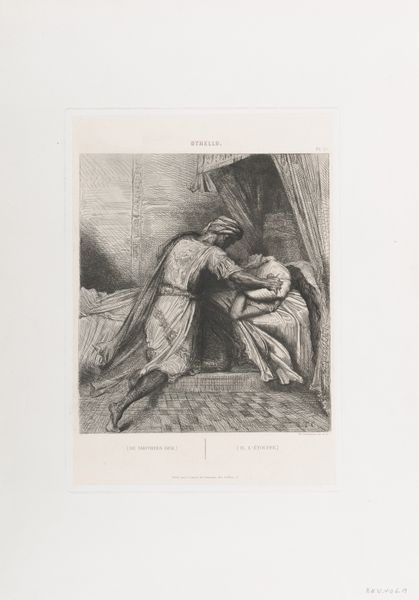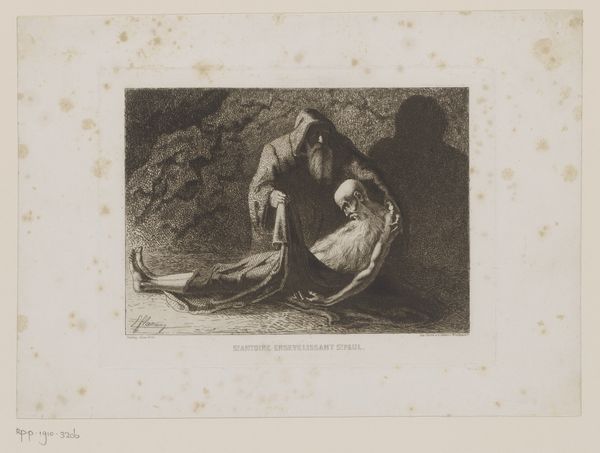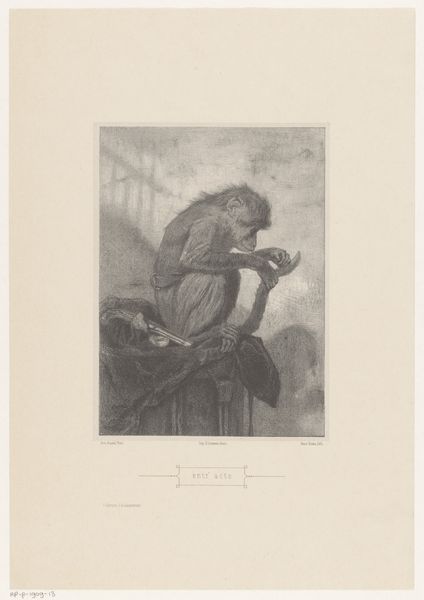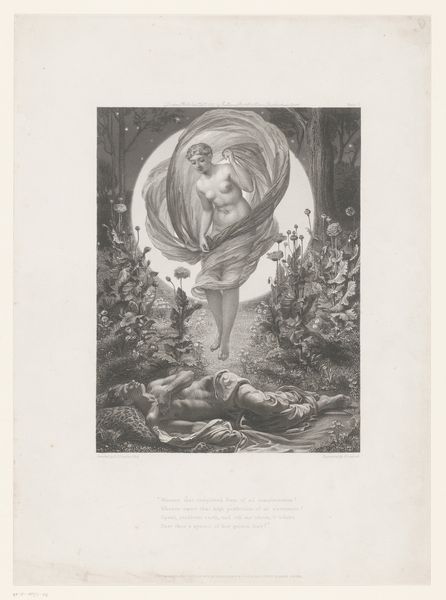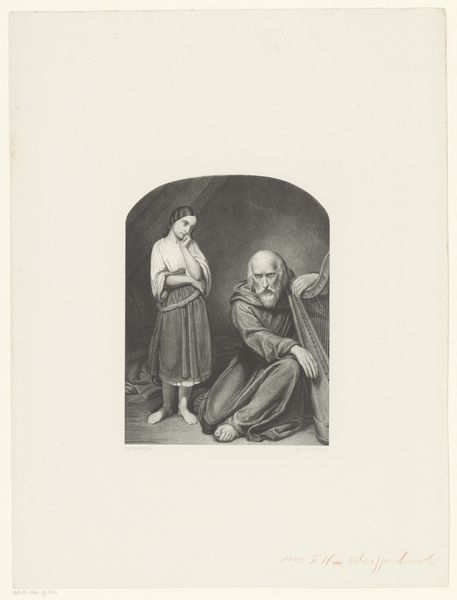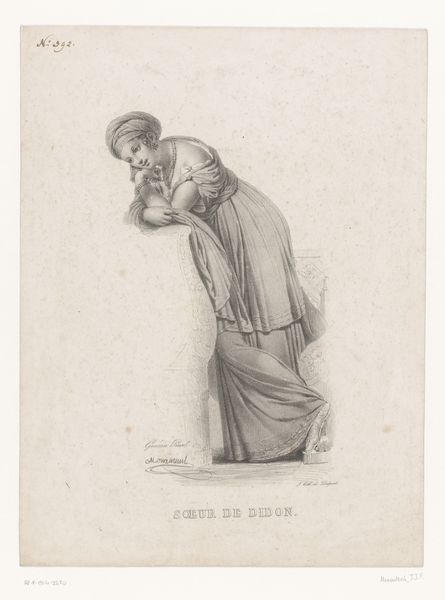
Dimensions: 400 mm (height) x 286 mm (width) (billedmaal)
Curator: The mood emanating from this lithograph is instantly mournful; the figure appears utterly defeated. Editor: Indeed. What you're responding to is Adolph Kittendorff's "Den Sidste Skjald" - "The Last Bard," created in the 1880s. The image itself gestures towards history painting, with distinct Romantic leanings. Curator: The bard's traditional instrument, a harp I presume, lies inactive in his hands, and his posture communicates overwhelming despondency. It’s hard not to see parallels with marginalized voices today. Is this a representation of societal change, the loss of cultural traditions perhaps? Editor: I'm so glad you noticed the harp. Traditionally, it’s an important Celtic and Nordic symbol, representative of storytelling, cultural heritage, and national identity. Its state of disuse tells us much of the artist’s anxieties. The landscape also has deep meaning; the dolmen, or stone table, represents ancient burial sites, reminding the viewer of a distant cultural past, with nature, perhaps a site of ancient spiritual power, overshadowing the bard himself. Curator: So, we have this confluence of symbols, the instrument and the burial site. His isolation, under the weight of the rock formations…it speaks volumes. I’m interested in this artist’s decision to portray the bard's lament; the weight of lost stories and a vanishing cultural lineage. Is Kittendorff reflecting a concern for how societal power structures silence dissenting voices? Editor: It certainly appears so. What the artwork evokes, with such potent use of symbols and placement, is the poignant silence when stories vital to communal identity fade from cultural consciousness, reflecting, I believe, enduring societal anxieties about cultural erasure. Curator: Understanding how this print engages with the past through visual symbols definitely enriches the viewing experience. Editor: Absolutely. By decoding these symbolic elements, we grasp how deeply embedded this imagery is in our shared cultural memory. The piece acts as a somber, visual echo chamber for ongoing social anxieties.
Comments
No comments
Be the first to comment and join the conversation on the ultimate creative platform.
